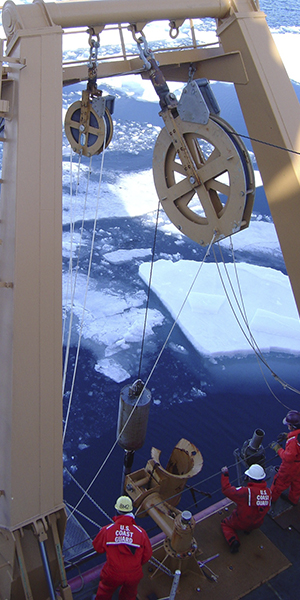Geology professor conducts monumental research into climate change

Submitted photo
November 19, 2012
From the North Pacific to the South Atlantic, professor Joseph Ortiz has seen several parts of the oceanic world. But the geology professor said he never envisioned conducting research in the “starkly beautiful” Arctic region.
Ortiz, along with scientists from Old Dominion University and University of Southern California, researched ice flows and climate changes in the Arctic and published their findings in the professional journal Nature Geoscience. The article, “1,500-year cycle in the Arctic Oscillation identified in Holocene Arctic sea-ice drift,” is now the second most blogged about article on the publication’s website.
“We’re motivated to do science research because it’s interesting, and I think it’s useful, but it’s kind of exciting to think that something that I worked on is really of importance and interest to people,” he said.
He researched some of the causes of climate changes, including arctic oscillation, which is an atmospheric pressure pattern that influences weather in the Northern Hemisphere, according to the press release. This pressure affects ice flow, one of the subjects the scientists researched in the study.
“The ice flow in the Arctic is tied to winter time weather conditions here in the United States,” he said.
When there is positive arctic oscillation, Ortiz said, the U.S. has milder, less snowy winters. When there is negative arctic oscillation, the U.S. has colder winters.
As the ice moves, it carries and deposits sediment, showing its movement over time. Using that information, Ortiz and his fellow researchers discovered a 1,500-year cycle within the changes in pressure.
However, he said the cycle is not the only factor. Although people typically want a black-and-white answer to environmental problems, the truth is that climate change is driven by both man-made and natural components.
“To say that all the variability we’re seeing is man-made is incorrect,” he said. “To say that all of the variability is natural is incorrect. What’s happening now is that we have a natural system that is modified by people.”
Ortiz said other scientific processes, such as the release of carbon dioxide into the air, also plays a part in the climate changes. Instead of just waiting to see what happens, he said, being proactive is a better solution to dealing with climate change.
“A number of approaches that can be used … in terms of shifting from one type of fossil fuel to fossil fuels that produce less CO2 per unit energy,” he suggested. “Another approach would be trying to invest in conservation strategies.”
Contact Alicia Balog at [email protected]











